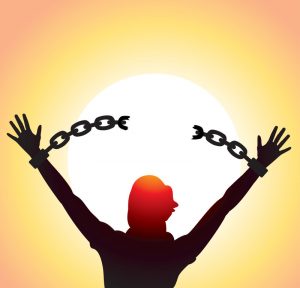AP/HUMA 4306 6.0
Course Director: Christina Sharpe
 This fourth-year seminar combines creative texts—novels, music, and the visual arts—alongside slave narratives, nonfiction and theoretical works in an examination of questions of Transatlantic slavery, the imagination, and the idea of freedom. In Toni Morrison’s landmark novel Beloved, the character Baby Suggs tells the formerly enslaved and putatively free born Black people gathered in the Clearing that, “the only grace they could have was the grace they could imagine. That if they could not see it, they would not have it.” This calling speaks powerfully to the work of imagination in ushering in livable worlds. Beginning with slave narratives by Frederick Douglass and Harriet Jacobs, students will theorize slavery and freedom, thinking through what Saidiya Hartman calls the “afterlife of slavery” and what Rinaldo Walcott refers to as “the long emancipation.” Drawing on other readings and texts from a range of thinkers, writers and artists, students will continue to think about slavery in the Americas, “archives,” sound, image, blackness and imagination. They will make connections between slave law, mass incarceration, carding, the ways that Black life is rendered disposable, and the multiple modes of resistance to the extension of Black unfreedom. The question of imagination is at the core of the reading and thinking in the course. What do the terms imagination and slavery mean, separately and together? How might one imagine new worlds and possible futures? In addressing these questions, students will regularly interact with visiting artists and scholars whose work and research address these themes.
This fourth-year seminar combines creative texts—novels, music, and the visual arts—alongside slave narratives, nonfiction and theoretical works in an examination of questions of Transatlantic slavery, the imagination, and the idea of freedom. In Toni Morrison’s landmark novel Beloved, the character Baby Suggs tells the formerly enslaved and putatively free born Black people gathered in the Clearing that, “the only grace they could have was the grace they could imagine. That if they could not see it, they would not have it.” This calling speaks powerfully to the work of imagination in ushering in livable worlds. Beginning with slave narratives by Frederick Douglass and Harriet Jacobs, students will theorize slavery and freedom, thinking through what Saidiya Hartman calls the “afterlife of slavery” and what Rinaldo Walcott refers to as “the long emancipation.” Drawing on other readings and texts from a range of thinkers, writers and artists, students will continue to think about slavery in the Americas, “archives,” sound, image, blackness and imagination. They will make connections between slave law, mass incarceration, carding, the ways that Black life is rendered disposable, and the multiple modes of resistance to the extension of Black unfreedom. The question of imagination is at the core of the reading and thinking in the course. What do the terms imagination and slavery mean, separately and together? How might one imagine new worlds and possible futures? In addressing these questions, students will regularly interact with visiting artists and scholars whose work and research address these themes.
